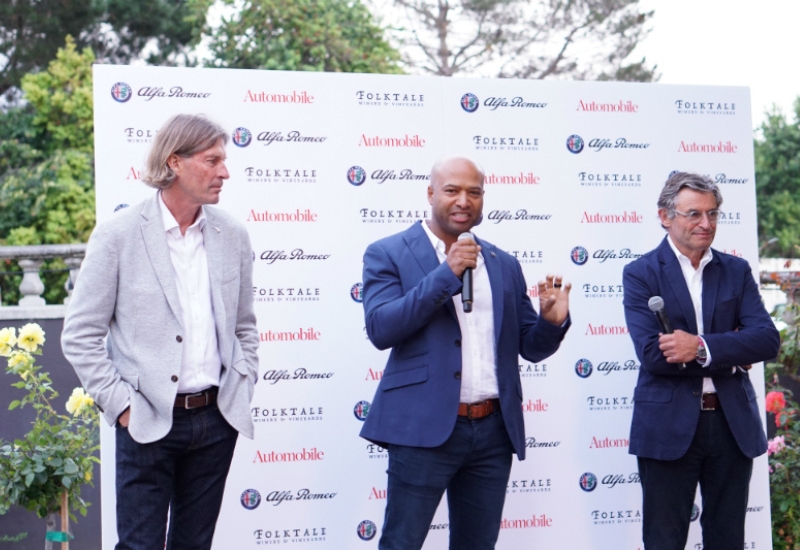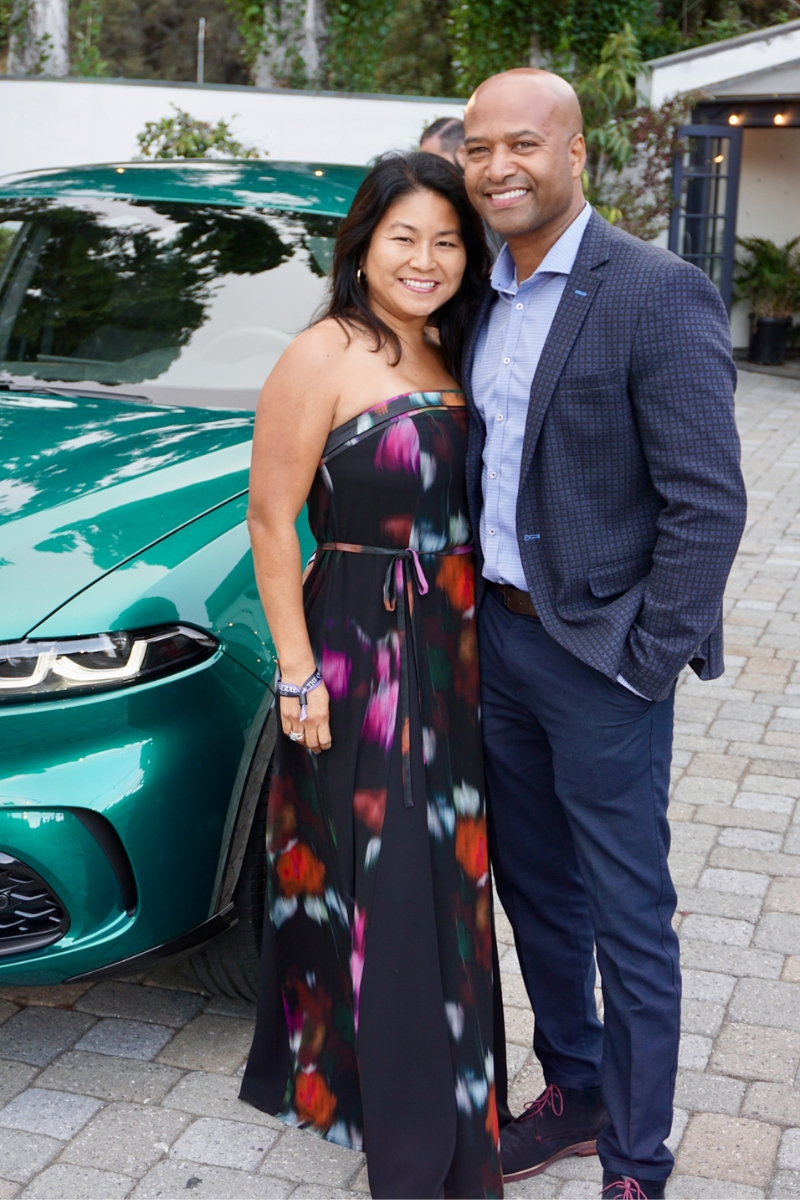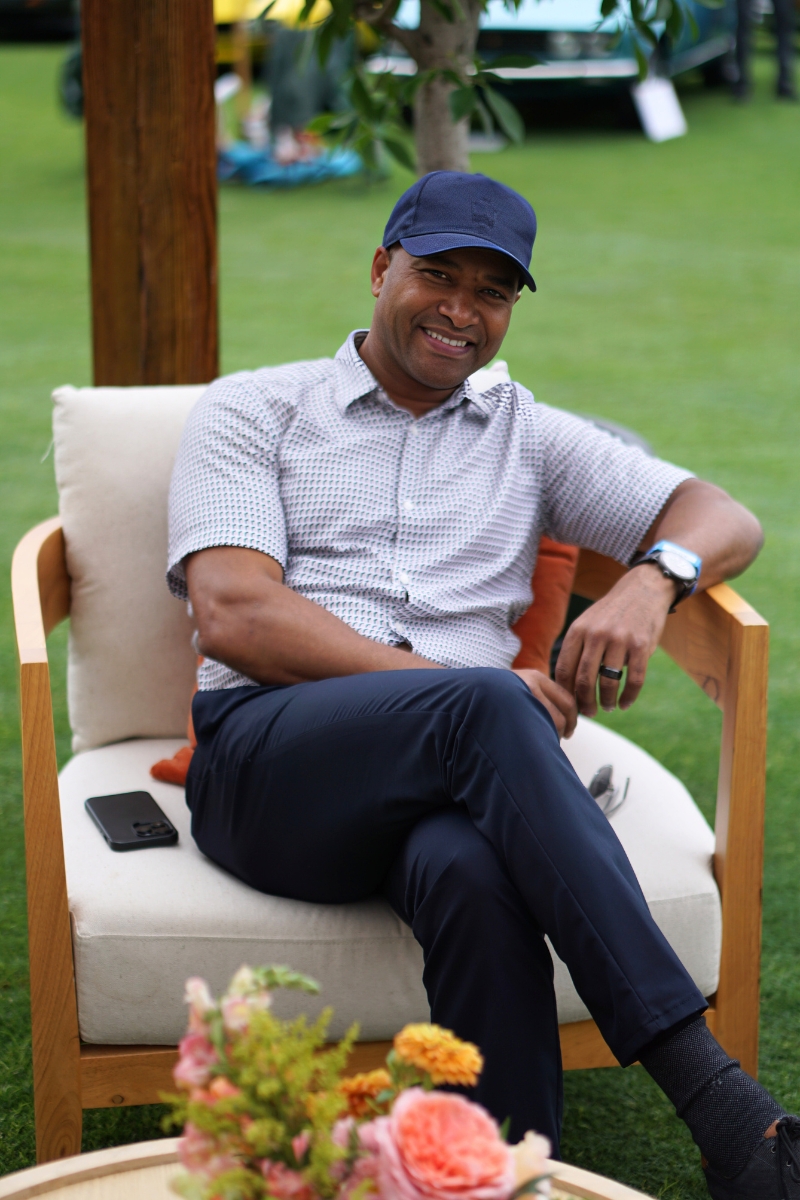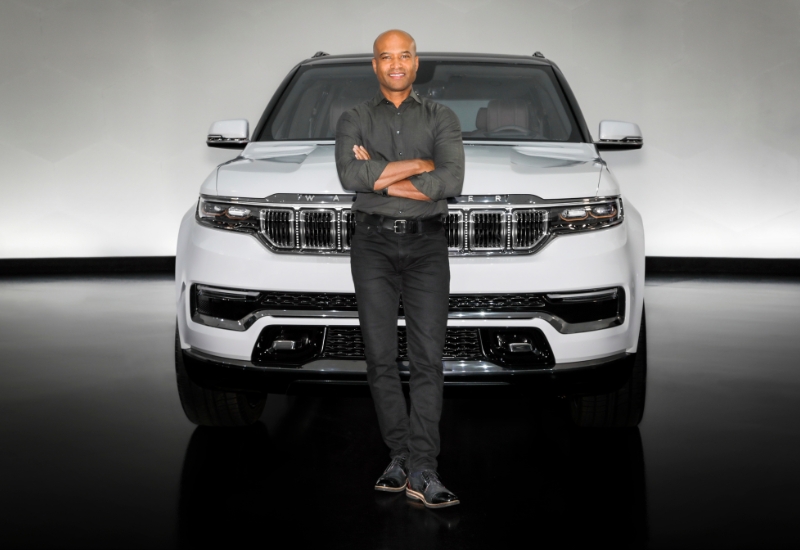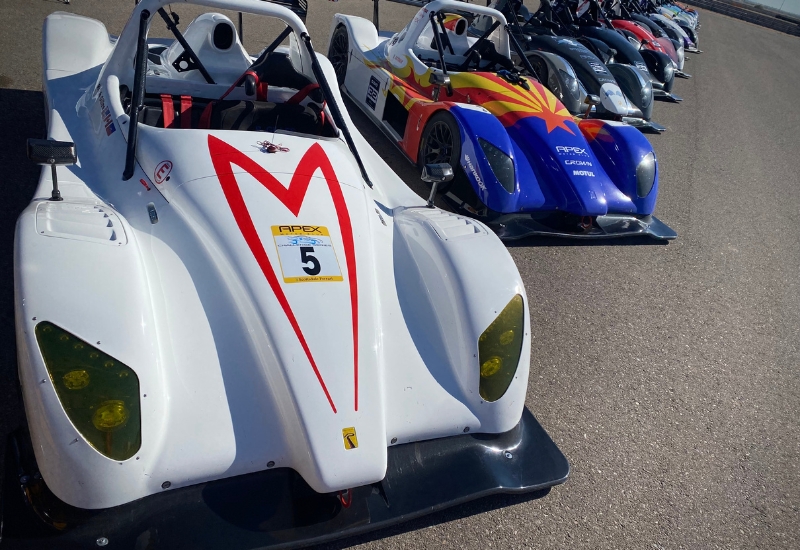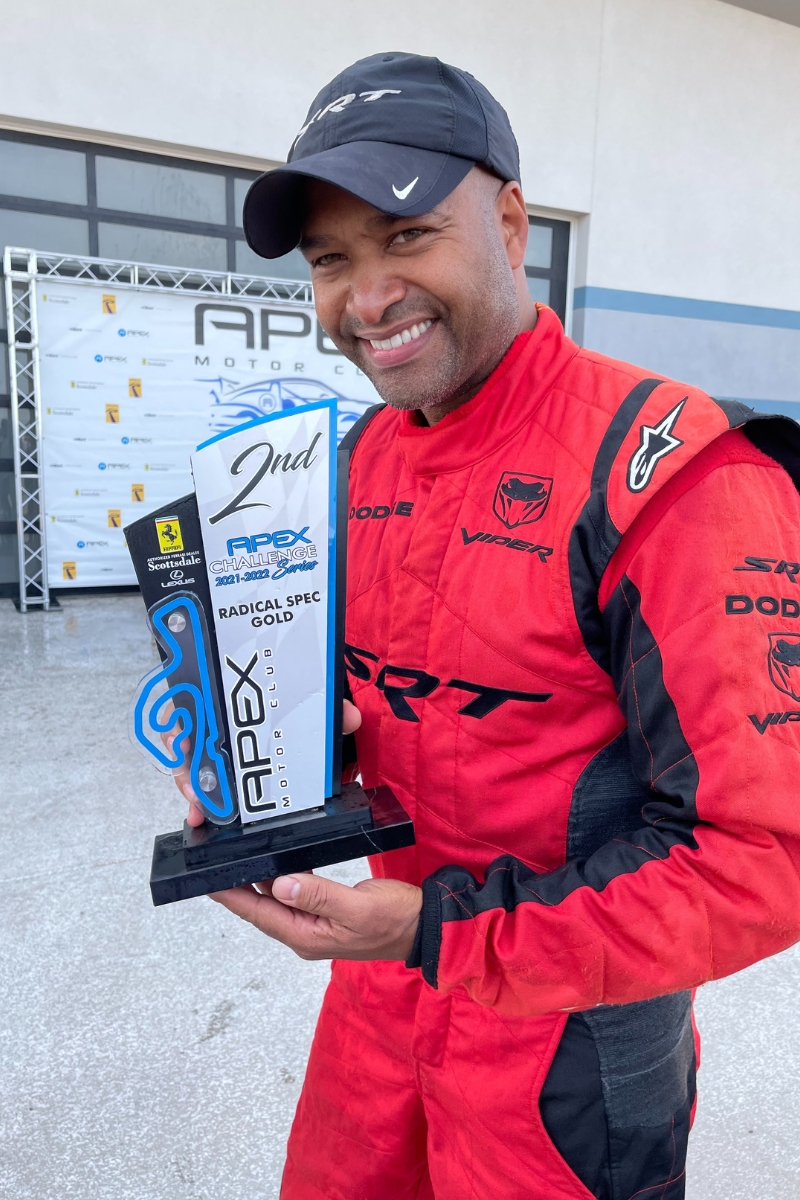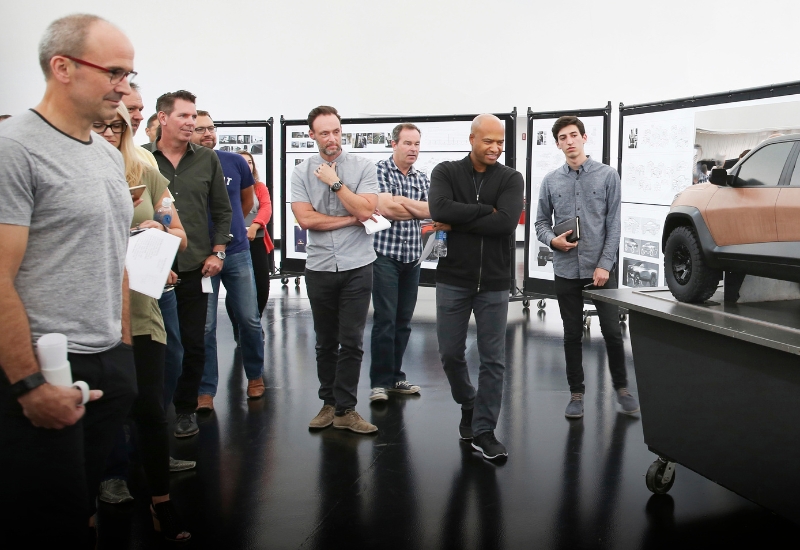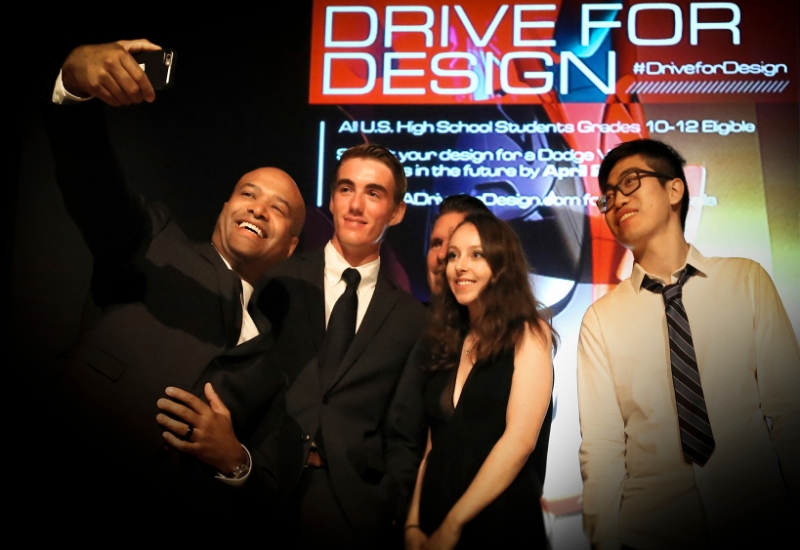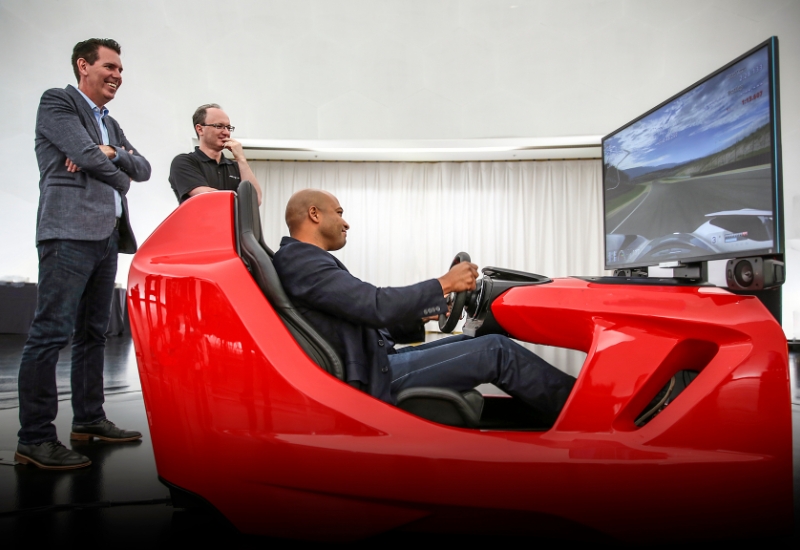[ad_1]
In honor of Monterey Car Week, I recently interviewed one of my favorite designers (and friends) in the auto industry, Ralph Gilles. Since 2021, he’s been serving as the Chief Design Officer for Stellantis (a leading global automaker that owns several iconic brands, including Chrysler, Dodge, Jeep®, Ram, Maserati, and Fiat (Latin America)).
Ralph is not only an award-winning designer (receiving honors including the Automotive Hall of Fame Young Leadership & Excellence Award, the NV Magazine Innovation Award, and the Black Engineer of the Year President’s Award), but he’s also an empowering and empathetic leader who has been guiding his teams to success for many years. With an illustrious career that spans multiple decades (including previous roles as President & CEO of Dodge Brand, Head of Design for Fiat Chrysler Automobiles N.V., etc.), his story is not just one of design triumphs; it’s also an inspiring narrative that resonates with the aspirations of dreamers, the determination of achievers, and the innate power of superheroes.
In today’s designer spotlight, we get a chance to delve deeper into the artistic mind of Ralph Gilles, to discover what drives his visionary designs and innovative ideas.
I first met Ralph 6 years ago at an Alfa-Romeo VIP Party in Carmel during Monterey Car Week. I vividly recall him presenting (alongside other industry leaders), as he had a captivating ability to move the audience. Over the past couple of years, I’ve enjoyed getting to know Ralph and his lovely wife, Doris, even better. Aside from his professional success, what stood out to me, in particular, was his down-to-earth, genuine, and amiable personality. He has the ability to make even strangers feel like they’re old friends, which goes to show the type of character he has.
Because I’m passionate about educating and empowering people to follow their dreams while becoming their best selves, given that I’m currently writing a rolling series of articles about Car Week (and the people who run the industry), I thought it was the perfect time to feature Ralph, as he’s exemplary of the type of leader that any industry (not just the auto industry) can benefit from.
So, if you love to feel inspired, read on to learn about how Ralph became a distinguished designer and top executive for one of the world’s largest auto companies, in addition to discovering how he motivates his team, where he finds inspiration, and even how he balances work and his personal life, to fuel his creativity, innovation, and design prowess.
CLP: From a childhood fascination to becoming a design visionary for Stellantis, can you take us on the journey of how you nurtured your passion for automobiles and design into a remarkable career?
RG: “Well, I think number one is – I was born with an attention-to-detail mindset. You know, really paying attention to my surroundings as a kid growing up in the 1970s, looking at, cool cars and not-so-cool cars. I used to joke about the ugly 70s; it was a very tough time for the auto industry, transitioning from big muscle cars to front-wheel drive economy cars, but they still had European cars – the Porsches and all that stuff. So I kind of took note of this dichotomy. I wanted to be involved in how to make that better and, because cars pull at your heartstrings, (so I wanted to) keep that going. I followed my dreams… but honestly, I was going down the engineering path and realized that I liked drawing more than I liked trigonometry. I like physics, but more driving-type physics, not mapping it out. So I ended up finding out about a design school in Detroit called CCS. Through a very generous aunt of mine who pushed me to write a letter to the then-CEO of the company, Lee Iaccoca. They were kind enough to write back. So I followed their advice and applied. Long story short, I got accepted and moved to Detroit from Montreal, Canada, and followed my aspirations by being in that environment. I was surrounded by incredibly talented people, and I thought I was a good designer and really learned a lot from being in that environment. That is what led to the job I have today.”
CLP: You once mentioned to me that you’re inspired by superheroes – could you share an instance where a superhero’s essence directly influenced one of your design projects? And for that matter, which superheroes have had an impact on you, and why? I think superheroes have a really big influence on many people, especially those who really follow their dreams, push boundaries, and challenge themselves to outgrow their old self-concept – transforming from who they thought they once were into who they can become.
RG: “Well, Superman is one of my favorites ’cause he can do everything. I do like the benevolence of Spider-Man. I think he’s a regular-ish person doing incredible things, and he’s got great empathy. Most of the superheroes I tend to like are the ones that have empathy skills, not just power and strength. So that’s inspiring. In terms of design, I use the word heroic a lot when I describe the vehicles that we do – an outside personality, something that you just can’t walk past, you have to go back and look at it again, you know, that kind of thing. Unforgettable designs are what I try to encourage my team to do, and what I’ve tried to do myself.”
CLP: In the world of automotive design, where each line and curve is meticulously crafted, what emotions or reactions do you aim to convey through your designs?
RG: “We design for a lot of brands. We are very lucky. We have about 100 nameplates at Santes now. Some are sporty, some are purposeful, and some are even delivery trucks. But, I think the ones that you would call iconic tend to, first of all, have an outsized personality. Again, you can recognize these vehicles without even looking at the nameplate or the name, you know, or the brand. You just know it’s a Jeep or it’s a Dodge, and I like that. Timeless design is something I’m very big on because, unlike the fashion industry, our products tend to have to survive 6-10 years in the market, and we’re designing them 4-5 years ahead of that. So, in my mind, it’s a 10-year lifespan that something has to be relevant and attractive, and that requires discipline to not overstyle it. So I tend to like simpler designs that age well and that allows a little room, a little air on the paper, so to speak. This way, the consumer can finish the design in their mind; they can see themselves in the vehicle.”
CLP: From pen and paper to advanced digital tools, can you walk us through your creative process and how technology has transformed the way you bring your ideas to life?
RG: “Today is a bit like a snowball – it gets bigger and bigger. When I was coming up, we had literally pen-to-paper or pencil-to-paper, or pastel was the way, and then the airbrush came along, then the computers followed, and then digital. Photoshop is like next level now. And now we have 3-D and we have ocular systems where 10 designers can design one car together. They can actually spin the car around and argue about design in this virtual space. So I would say we’re using all the above. You know, we haven’t stopped using, people. I still ideate personally on pen and paper, just like I did back in the day. The one big difference is today we tend to look at vehicles in the 3-D space very quickly, sometimes within a few days of the ideation process. It’s pretty amazing!
CLP: As Chief Design Officer, you oversee multiple iconic brands. How do you strike a balance between maintaining brand identity and pushing the boundaries of innovation?
RG: “We always start trying to push the boundaries. We don’t just sit on the brand’s legacy, let’s say, and try to keep milking that because it’s dangerous and you can get stuck. We always open up the design competition to people who may not love the brand or may not understand much about brands. Sometimes I use my Asia studios to sketch new Jeeps or my Italians to sketch Rams, and vice-versa. We throw it around, and that’s our benefit of being a larger company like this, is that we have those resources and there’s nothing more exciting than for a Latin American designer to sketch a Chrysler that they know they’ll never have in their country, for example. It forces them to think out of the box. I try to till the soil and see what happens. Luckily, most of our brands tend to have 3-4 nameplates. Some of them, like the Wrangler, are the iconic ones that will probably evolve. And then the other ones, we can have some fun with and really take some chances. We tend to try to hold a little bit, let’s call it a 10% iconic detail from the past, and try to make sure the rest is as new as possible.”
CLP: Tell us about a specific design challenge that initially seemed insurmountable, but through creative thinking and collaboration, turned into a triumph.
RG: “The new concept Charger that we showed. We were trying to find a way to create a very slippery new design that would have great electric range, yet still have the character, the menacing feeling of a muscle car. We are able to find a solution with the pass-through wing on the front end of the Charger, that does both things. So, it has the illusion of a muscle car front end, and then it has the efficiency of a bullet-nose, a futuristic vehicle. So it took a lot of doing, but I think it’s a really cool solution.”
CLP: If you weren’t a car designer, what alternative creative path do you think you would have pursued, and why?
RG: “You’re gonna laugh, Christina. One of my things was to be a weatherman.”
CLP: Your career has been one of constant evolution. How do you ensure that you keep reinventing your design approach while staying true to your core artistic values?
RG: “I think a lot of greats have said this, but you have to surround yourself with great people. I really believe in that. I hire very carefully. When I hire people, I try to mind the culture. Culture is important. You can’t be creative in a toxic culture or a weird competitive culture. I think we have a good dose of competition, but our designers tend to build on each other. They work together very well, and that’s what I look for. It’s not a one-man band at all, and could never be. So, my team is everything. I don’t sketch cars every day like I used to. So it really is about the team that you build and giving them the freedom to be creative, to ask questions, to fail, etc. So I really try to create the most fertile environment possible and then really reward. When we have some wins, we celebrate together and we really kind of make it fun to succeed.”
CLP: Well, I think that’s actually really important to say because I think so many leaders miss that. They focus on just the bottom line or the outward success, but they’re forgetting the corporate culture. At the end of the day, you could say – it’s not personal, it’s just business. But that’s not true. Everything is a human experience. What you’re doing – inspiring, motivating, guiding, leading, and helping them overcome their fear of failure while trying new things – takes a lot of leadership and character. And I think you have those values, which I’ve seen personally, as a human knowing you. That to me, is the mark of a true leader.
CLP: One of the hallmarks of a great designer is the ability to envision beyond the present. What do you see as the future of automotive design, and how are you contributing to shaping it?
RG: “I think the form factor’s gonna have to change, as it already has changed. I think vehicles have maybe peaked in size. We actually have to coax people back into smaller, more efficient vehicles. With the proliferation of electrification, the engine is no longer where it used to be. So a lot of our vehicles that we know today, all the classics we see at the shows, all had some kind of engine in front which really defined the vehicle’s shape for almost 100 years. That’s going away very quickly. In some cases, it’s already gone, but yet we have legacy silhouettes. And, some of that is due to crash requirements. But I think that the next big thing is to say the car can be 20% more compact than what you’re used to. How do you convince people that they’re still getting the same value? Because, especially in this country, you tend to equate size with value. So we’re trying to change that conversation to content, to experience, to the idea that sometimes less is more, right? I think that’s gonna be the challenge as designers try to educate people or just make them fall in love with a different thing now. We embrace it. We love to have this opportunity to shift once again. You can really redirect popular culture with a couple of great hits and then build on each other.”
CLP: Amidst the fast-paced automotive industry, how do you find moments of stillness and inspiration to recharge your creative energy? Do you have a mindfulness practice? If so, what do you do to stay balanced/centered?
RG: “Well, I just started breathing exercises, which is something I never did before. I did a getaway trip in Sedona, Arizona, and for the first time in my life at 53 years old, I did some soul searching. I’m just giving myself time to just sort things out because it is a complex business. There are a lot of actors and characters, let’s say, in their play. You know, learning how to manage very big agendas, big budgets – that all takes a lot of work. And, inner strength, that’s a different skill; something they don’t teach you in school. So, I’m just trying to find the balance between managing humans. Also, putting a helmet on is great therapy for me. Driving actually lowers my heart rate. It’s the opposite of most people. I actually find peace when I’m going fastest. It gives me something to perfect. I love the idea of perfecting something and managing a machine. Especially now, I race in a series where everyone has the same equipment. So it’s really, truly about how well I’m driving the machine, so that’s another source. And finally, a good old-fashioned hike. Separating myself from the industry and just taking a hike in nature, I love it more than anything else. If it’s not a hike in nature, it’s a hike in the city – in the urban jungle.”
CLP: Among the dazzling lineup of Stellantis brands of vehicles, do you have a personal favorite that holds a special place in your heart? What makes it stand out to you?
RG: “It changes every year ’cause we launch a lot of cars. I’m very proud of the Maserati Cielo that Klaus and his team (indirectly under me) designed, and I gave him a lot of freedom on that. It’s gorgeous; it’s just so clean. For all the noise that’s out there, it’s a very mature design that will hopefully look good for 20-30 more years. It’s just beautiful.”
CLP: Beyond the confines of the studio, I know you’re also passionate about racing cars (a hobby you enjoy with your wife Doris). How has your experience on the racetrack influenced your design philosophy and vice versa?
RG: “It’s a bit of a stretch to go all the way back to design philosophy. First of all, it’s humbling ’cause I’m normally used to being the best at something. But it’s really humbling when I finish 3rd or 4th. So the competitive thing is getting the best of me, I would say. What’s interesting about being in the racing community is that you mix it up with people who don’t know anything about your company. So I race with friends who come from completely different walks of life. Having a conversation with them in the pit while we’re waiting is like a research clinic because they’ll mention cars that I hadn’t thought about, and they don’t even know that we make certain cars that they love. Finding a way to be relevant to a totally different audience is an interesting challenge. So, I take that back with me. I think we have to be careful as designers or even people in our industry, not to talk to just ourselves. We can surround ourselves with people from our industry, people from our beloved brands, or even car collectors who love what we love, but then you’re not really listening to the real market. So, that gives me an opportunity to jump out of my comfort zone and really interview real people.”
CLP: Dreams often drive innovation, as our subconscious minds speak to us in mysterious ways. Can you recall a vivid dream or a particular moment of inspiration that led to a groundbreaking design idea?
RG: “I can’t tell you because that would give a secret away. But what I find is – it is definitely dreaming. Usually what happens is that I’ll meet someone in a different industry or go to a tech show or something and be exposed to a certain piece of technology or innovation, and then I have a dream that night about it and wake up with an idea of how to combine that into something I’m doing. So inspiration is always happening. That’s why I welcome new experiences all the time, especially if I get to go to any kind of event that I don’t normally go to. I’m very fascinated by the tech industry now. We rub elbows more and more with the tech industry, and that brings crazy innovation. Just walking into the CES show is one way to do it. But, I have a group of friends who are in Palo Alto, and just having dinner with them, my brain is swimming with ideas. I mean, they’re fearless, all these ideas they’re having. I used to think that Palo Altonians thought autos were dinosaurs, but it’s the opposite. They see that we’re changing and they wanna be part of it. So to me it’s all, it’s all just amazing! So I tend to have a lot of vivid dreams about how to conflate the two things; how to mix tech and auto, in a way that’s holistic.”
CLP: Your journey showcases the power of determination. What advice would you give to aspiring creatives (such as entrepreneurs, artists, designers, etc.) who face obstacles on their path to success?
RG: “Ask for help and spend a lot of time with discovery. I think people underestimate that artists tend to be single contributors, they tend to be loners. So, try not to be a loner and ask for help. Be observant and hunt away. You know, luckily the internet is full of incredible stuff, so use it to reverse-engineer some of your favorite designers.”
CLP: A design is a reflection of its creator. How do you infuse your personal values and life experiences into your automotive masterpieces?
RG: “The industry is huge, so I let other competitors do what they want to do. I want to focus on timeless taste, and tasteful designs, that just don’t need to be explained. My big thing is to make sure it’s just beautiful. Shock is great, but not lasting. I’d rather create lasting artifacts.”
CLP: From online trolls to industry critics, when bringing a new concept to life, like all leaders, you most likely experience challenging moments, especially when negative media reviews or social media commentary sparks controversy. How do you overcome self-doubt and keep faith in your creative vision? What advice would you give to people who are striving to build brands, while overcoming rejection, negative feedback, and disheartening responses from the public?
RG: “Well, I’m better at it now. I think if it’s overwhelmingly negative, you have to learn from it. That means that there’s something you missed in the process. But, I do see a lot of times you could tell by the tonality of the critic, if it’s just not for them, per se, or if it’s just truly bad. If you hear a rhythm of badness, which is rare, and I don’t think I’ve ever experienced that directly in our world. It’s usually more questioning something. But then again, when you see the vehicle does really well in the marketplace, that means, well, I didn’t design it for that journalist or just for that person. But rather, I designed it for this person, and I don’t expect everyone to get it. I know in my heart, that by the time they’ve seen it, we already have 2-3 years invested in it. So, you can’t undo 3 years of work, right?! So just let it simmer, and over time, people will get it. For example, the Viper. I remember when we launched the Viper, people were like, ‘Oh, that’s it?!’. They were expecting much more. But, now it’s crazy… People love the car! Five years on, they’re now collecting and overpaying for it, like triple the price. So, sometimes art appreciates.”
CLP: Speaking of art, if you could collaborate with any artist, living or from history, on a design project, who would it be and why?
RG: “Basquiat – I think I would love to work with him. I’m saying that ’cause he’s a Haitian artist. There are also furniture artists. I think it would be more the type of industry I would love to work with, as I do think the interiors are going to become more of a living space.”
CLP: You’re known for pushing boundaries – from design to leadership. How do you foster a culture of innovation within your design teams at Stellantis?
RG: “Tolerating failure. I think letting them have some free time is very important. So I tend to not be involved in the early work. My briefs are very high level on purpose, because I want to see what innocence brings, you know? One way that we keep inspiring them is to rub our elbows with students. We do a lot of work with design students. We have interns blend into our studios as if they’re contributors every day, and that brings amazing results. Sometimes I forget that the interns are there, and they have this innocence about them which is contagious. So, that’s one way that we continue to keep ourselves as fresh as possible. But, it really comes down to the ‘no dumb ideas’ mentality. We really let it be crazy at the beginning and never over-criticize something that’s a little bit out there. So, it’s fun.”
CLP: Your journey inspires people to dream big. Can you share a mantra or quote that has been your guiding light throughout your career?
RG: “‘Dream big’ is one I use all the time, literally.”
CLP: Which leaders or innovators have inspired your career path, and why?
RG: “Tom Gale, who was my predecessor’s predecessor of design because of his multipolarity. What I mean by that is he had a degree as an engineer, a degree as a designer, and also a Master’s in Business. And I have two out of those three, as I went back and got my Master’s. But I kind of got my engineering mind through my early trials in engineering, but also rubbing elbows. I think it’s important because, in our industry, to convince a mega-size company like ours to go a certain direction, you have to know your stuff and you’ve gotta really understand the product in a 360-degree way. I’ve been really inspired by Tom Gale in that way.”
CLP: What legacy do you aspire to leave not only in the automotive industry but also as a source of motivation for those who dare to dream fearlessly?
RG: “That’s a deep one. Well, there are a couple of things going on with me as a person. First, I’m only the second black head of design of a company. I also just found out that I’m the longest-running continuous head of design for any auto company, I think, in the world. That’s why I want to leave the place better than I found it. When I say that – I mean the products, the brands, the people, even the engineers, everybody involved, even the marketing people, and the PR people. Everyone involved in the process of making a new car should love what they’re doing, and that love will come through in the product. I used to joke that I really believe that a customer can tell that a car is made with love.”
As evidenced by his remarkable journey, Ralph is living proof that when you believe in yourself, nurture your talents, and pursue your passions – you’ll find the momentum to propel yourself further than you can even imagine. His embodiment of creativity, resilience, and a genuine desire to uplift and encourage people extends far beyond the world of automobiles, serving as an inspiration for those who dare to turn their dreams into an exciting and fulfilling reality.
Over the next few weeks, I’ll be sharing the stories of other incredible car designers and successful executives who are also steering the direction of the auto industry. Stay connected on MSN or subscribe to Inspirations & Celebrations for access to exclusive insights and in-depth interviews that will motivate, empower, and inspire you.
[ad_2]
Source link
Jarastyle – #Driving #Innovation #Inspiring #Visionary #Design #Empowering #Conversation #Ralph #Gilles #Chief #Design #Officer #Stellantis
Courtesy : https://inspirationsandcelebrations.net/2023/08/driving-innovation-inspiring-visionary-design-an-empowering-conversation-with-ralph-gilles-chief-design-officer-for-stellantis.html


